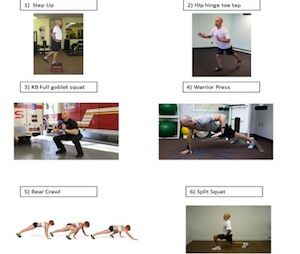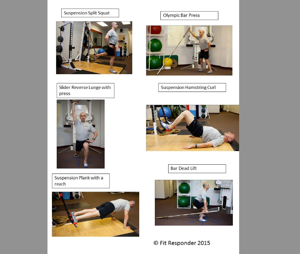On June 26 the 2015 World Police & Fire Games will kickoff in Fairfax, Va. The games’ organizers expect over 12,000 professional, public safety athletes from 70 countries competing in more than 60 sports to qualify for over 1,600 medal sporting events.
That’s a lot of public safety athletes that are preparing right now to excel in their respective sports and events.
If you are one of these dedicated athletes or just a dedicated public safety athlete not interested in competing, I intend to walk you through a workout program that will get you in the best shape of your life.
The plan is simple: you have six months to train, balance, eat clean, prepare and peak for the pinnacle of public safety fitness. In this case it’s the games or maybe just to be better then you are today.
No fitness program for any athlete regardless of the sport is complete without proper mobility and flexibility. No matter how strong you are or how fit, without good mobility (joint motion and muscular flexibility) injury will eventually occur.
Movement matters
The best athletes will fail without proper movement. Movement matters, so you need to move well and move well often.
First is self-myofascial release followed by trigger-point treatment. This is truly where great athletes are made and old injuries go away. The time you spend preparing to workout should be almost as long as the workout.
Think of it as “pre-hab so you do not have to rehab.” As I stated in my last article, check off the truck then check off your body.
This approach is perfect for when you are on duty because you have to get you ready for whatever call comes in. As an athlete, some targeted pre-shift stretching is good, but you have to do more. That’s where the foam roller comes in.
I like to think of foam rolling as brushing my muscles. As an obsessive-compulsive muscle brusher, I want to roll each and every fiber I can get. Start at the calf, then the hamstring and then the glutes.
From there I like to focus on the front of the leg, and what I call the firefighter spot, the inner thigh. From there, go to the lats and finally the upper back.
Trigger points
The foam roller warms up the big muscles, just like a jog or those dreaded calisthenics we all did in the past. Now, focus on the root of most movement evil, trigger points. The above video explains trigger points very well and demonstrates how to relieve them.
So the superficial tissue is warmed up from the roller and then you got deep with the tennis ball to mobilize those nasty trigger points. At this point, any stretching you do will be much more effective.
That’s the pattern you need to follow each and every time you train. A good warm up should take at least 10 to 15 minutes, but it’s this scientific approach to movement and mobility that will reduce your chance of injury both on and off the job.
Now that you are moving well and moving often, it’s time to train. I’ll break training for police and fire games into two articles. This one addresses mobility and stability; the next looks at the priority fitness system that I have developed to create tactical fitness.

Weeks 1 to 3
After you’re warm up, do the following six exercises in a circuit. Do three sets of 12 to 15 reps for each exercise with no rest between exercises; do the bear crawls the full length of the bay.
Rest 90 seconds between sets and then repeat.
For your cool down, do 30-second intervals on the stepper (bike or rower are OK too) with 15 seconds rest for a total of eight rounds. As you progress to week 3 feel free to add your turnouts to the mix.
Weeks 4 to 6
Each exercise is three sets of 10 to 12 reps with a strict 45 seconds rest between sets. Use awesome technique; sloppy reps do not count.

When done, grab a kettle bell or heavy dumbbell and do farmers walks up and down the bay. Do them left handed, right handed and with both hands. Make sure that your torso is upright and that the shoulders are pulled back at all times during the walks.
After each lap, before switching hands, run the bay three times; if you have a tower hands, do the stairs one time after each lap. As you progress and get used to the movements, do it in your turnouts.
Remember, no exercise program should ever cause injury if it’s done properly. Technique matters and so does your diet. Next, we’ll look at priority fitness system.


